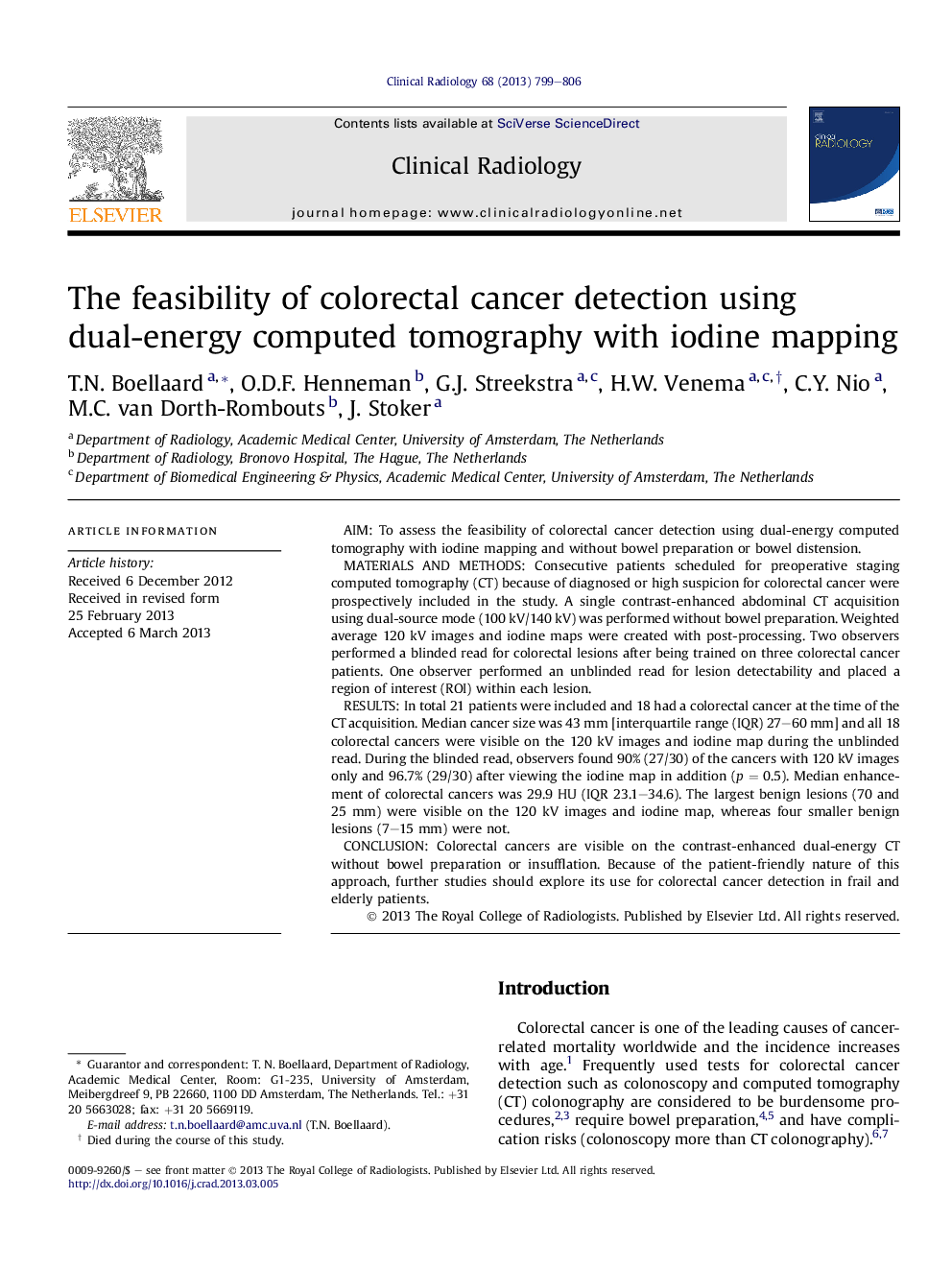| Article ID | Journal | Published Year | Pages | File Type |
|---|---|---|---|---|
| 6190905 | Clinical Radiology | 2013 | 8 Pages |
AimTo assess the feasibility of colorectal cancer detection using dual-energy computed tomography with iodine mapping and without bowel preparation or bowel distension.Materials and methodsConsecutive patients scheduled for preoperative staging computed tomography (CT) because of diagnosed or high suspicion for colorectal cancer were prospectively included in the study. A single contrast-enhanced abdominal CT acquisition using dual-source mode (100 kV/140 kV) was performed without bowel preparation. Weighted average 120 kV images and iodine maps were created with post-processing. Two observers performed a blinded read for colorectal lesions after being trained on three colorectal cancer patients. One observer performed an unblinded read for lesion detectability and placed a region of interest (ROI) within each lesion.ResultsIn total 21 patients were included and 18 had a colorectal cancer at the time of the CT acquisition. Median cancer size was 43 mm [interquartile range (IQR) 27-60 mm] and all 18 colorectal cancers were visible on the 120 kV images and iodine map during the unblinded read. During the blinded read, observers found 90% (27/30) of the cancers with 120 kV images only and 96.7% (29/30) after viewing the iodine map in addition (p = 0.5). Median enhancement of colorectal cancers was 29.9 HU (IQR 23.1-34.6). The largest benign lesions (70 and 25 mm) were visible on the 120 kV images and iodine map, whereas four smaller benign lesions (7-15 mm) were not.ConclusionColorectal cancers are visible on the contrast-enhanced dual-energy CT without bowel preparation or insufflation. Because of the patient-friendly nature of this approach, further studies should explore its use for colorectal cancer detection in frail and elderly patients.
